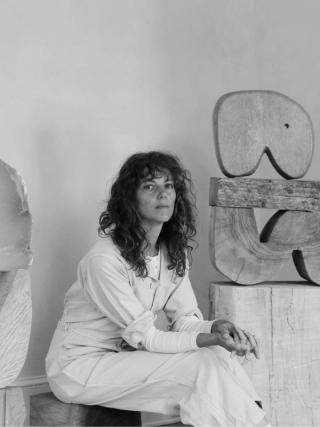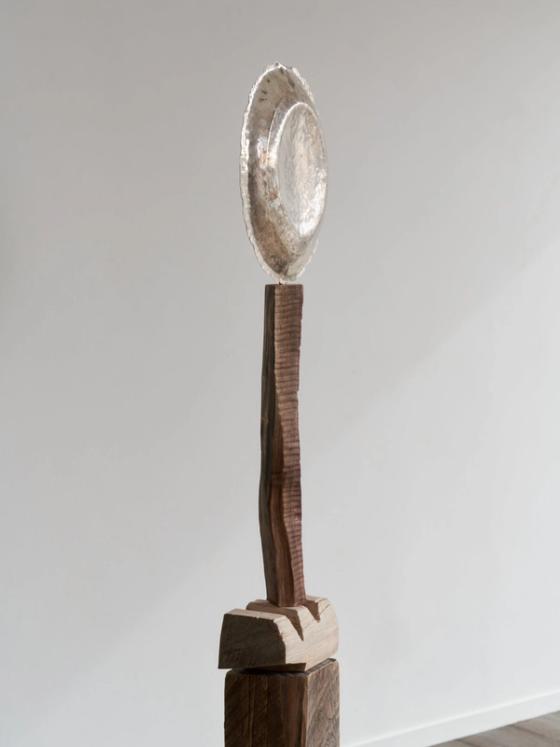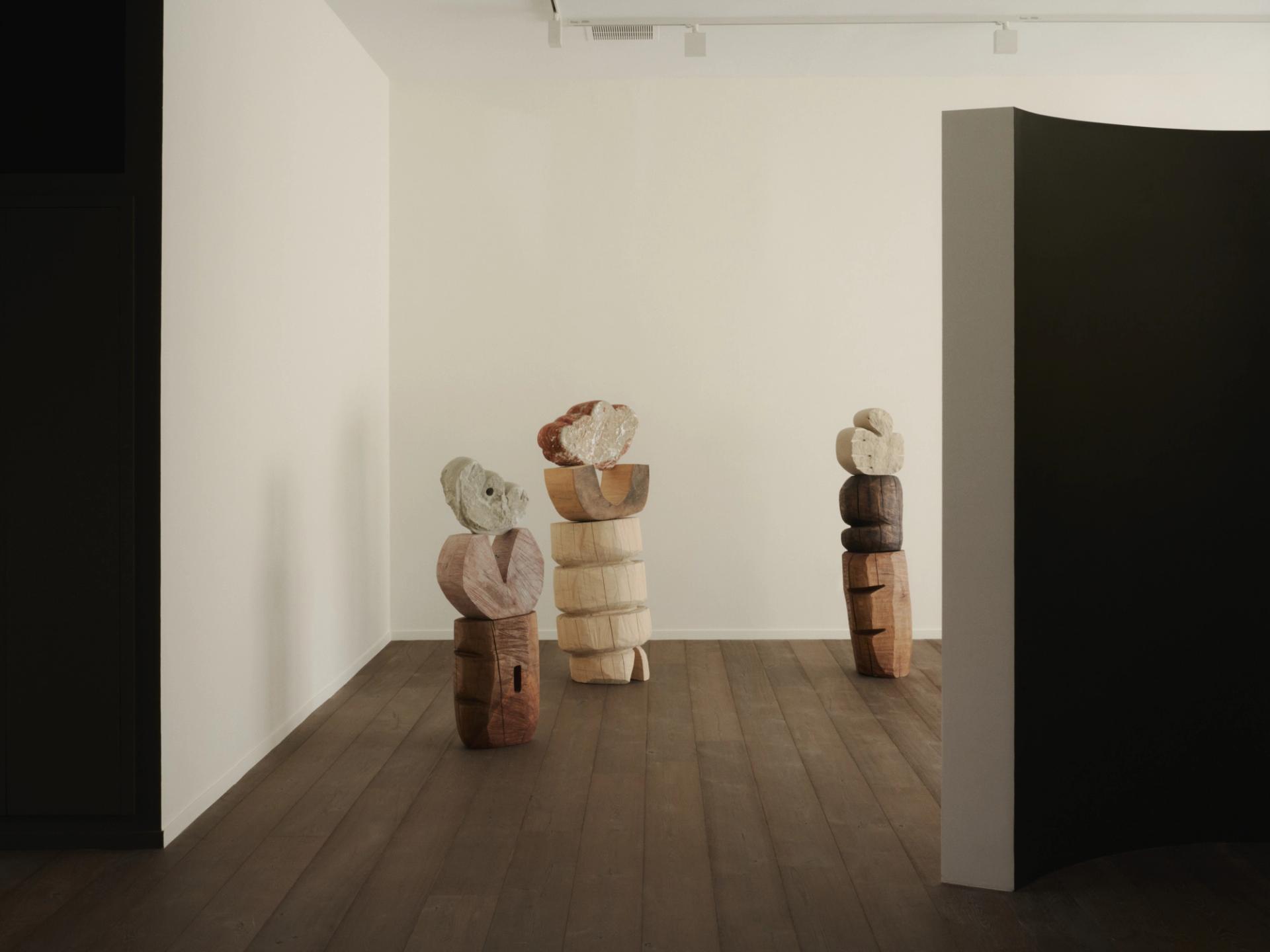Nadia Yaron
Sculptor Nadia Yaron carves weighty, organic forms from wood, stone and metal in her home studio in Hudson, New York. Her pieces are hewn with chainsaws and grinders, a necessarily violent practice that contrasts with the tranquil sculptures. “Using a chainsaw is such a cathartic thing,” says Yaron. “There is a push and pull to it, and out of the chaos comes some quiet.” In her studio, a 19th century barn in the grounds of her home, her pieces are heaved up with a chain lift rigged from the rafters, and stacked on top of one another in teetering totemic structures “My work is purposefully imperfect, which reminds me of the fragility of nature,” she says.
Yaron began her practice in 2017, and has a background in wood furniture making and textiles. Her mother was an art teacher, and encouraged her to create from a young age. She was born in São Paulo, Brazil in 1978 and raised in New York, and read Women’s Studies and Sociology at Hunter College, NYC. In 2018, she showed her wood sculptures for the first time at an Architectural Digest Design show, and won best in show for fine art. She has since shown at Jeff Lincoln gallery in Southampton, NY; in Ojai and Los Angeles as part of Frieze; and November Eleven gallery in Brooklyn.
Her sculptures are inspired by small, transient events, such as a fallen leaf, a gust of wind, a pink iris pushing itself up through the spring snow, or a cloud passing overhead. “I love observing nature everyday. We are in a valley surrounded by mountains, and there is so much movement,” she says. These encounters are rendered in stone, a process which begins with grinding outside, and turns to the slow, quiet movements of sanding and shaping with hand tools, with one curve sometimes taking several days of repetitive motion to be achieved. “It is something you have to surrender to,” she says. “You have to give yourself to the stone and let it be.”
My work is purposefully imperfect and imbalanced. The imbalance leads to a bit of discomfort, a dissonance, and an awareness of how fragile life can be – a reminder that nature, including humans, are both perfect and imperfect all at once.

Featured works

 LA Gallery
LA GalleryNadia YaronThe Cosmic Connector, 2022
 LA Gallery
LA GalleryNadia YaronWoven Web II , 2023
 LA Gallery
LA GalleryNadia YaronBrown Alabaster, 2022
 LA Gallery
LA GalleryNadia YaronWall Cloud II , 2023
 LA Gallery
LA GalleryNadia YaronNight Wind, 2022


